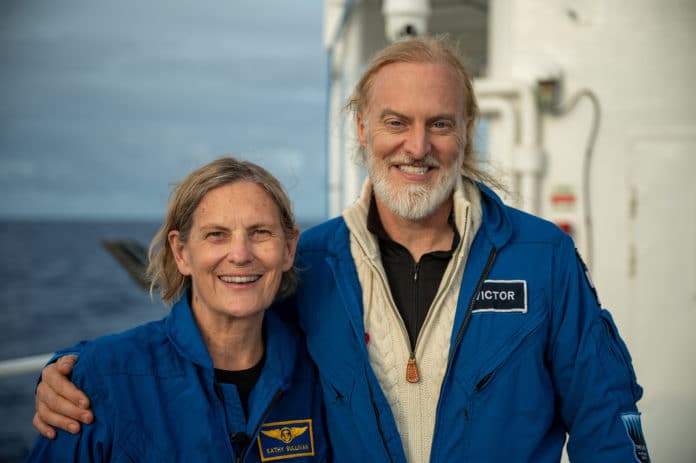From being the first American woman to take a spacewalk in 1984 to become the first woman to explore the deepest known point of the Earth’s surface, Dr. Kathy Sullivan continues to break barriers. This former NASA astronaut and geologist has become the first woman to visit the deepest part of our planet, the Challenger Deep, located inside the Mariana Trench in the Pacific Ocean.
She is the 8th person to reach the bottom of the Challenger Deep, following the first two were Don Walsh and Jacques Picard in 1960. James Cameron, the film director, also reached the bottom of Challenger Deep in 2012.
The 68-year-old Sullivan successfully completed the expedition using a DSV Limiting Factor (LF) submersible vehicle. The mission required Sullivan to dive up to 35,000 feet below the ocean’s surface.
DSV submarine Limiting Factor was built by the company Triton Submarines based in Florida, United States. LF is the first vehicle in history that has repeatedly gone to the deepest point in the ocean, characterized by extreme pressure, extreme darkness, and near-freezing temperatures. Only special microorganisms can survive there.
Sullivan was accompanied by her pilot Victor Vescovo of Caladan Oceanic, a company dedicated to the advancement of undersea technology and supporting expeditions. This company is preparing a 4K video of this point on the planet with which we can see what is hidden in such depth.
After returning to the LF parent, DSSV Pressure Drop, Sullivan and Vescovo made phone calls to ISS in Low Earth orbit at an altitude of 408 km (254 miles), whereas the LF operates at a depth of nearly seven miles below sea level. ISS operates in a vacuum environment, while LF has a pressure equivalent to 2,200 tons, which presses the hold.
“As a hybrid oceanographer and astronaut, this was an extraordinary day, a once in a lifetime day, seeing the moonscape of the Challenger Deep and then comparing notes with my colleagues on the ISS about our remarkable reusable inner-space outer-spacecraft,” said Kathy Sullivan.
“We made some more history today and then got to share the experience with kindred spirits in the ISS. It was a pleasure to have Kathy along both as an oceanographer during the dive, and then as an astronaut to talk to the ISS,” said Victor Vescovo.
